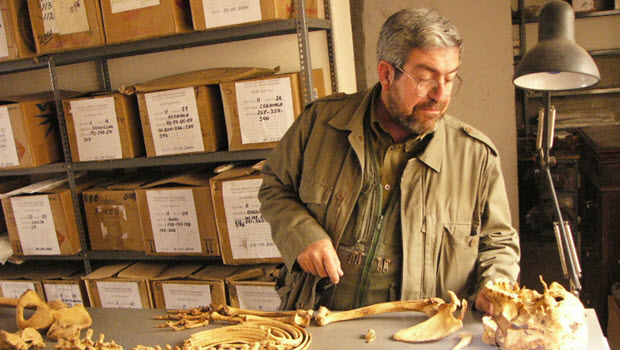
Mummies the Word
Originally published in South American Explorer (Number 68, Autumn 2002)
She is called La Señorita, a woman born during the last generation of a once-mighty Inca Empire in decline who lived to see her world overtaken by Spanish conquistadors.
A testament to the destruction of a lost civilization, her tomb contained symbols of noble social rank, while her mummified remains suggest a life ravaged by malnutrition and disease unleashed by the European invaders.
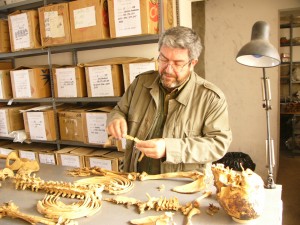
Fertur Peru Travel can arrange a private lecture session with archaeologist Guillermo Cock as part of an educational tour of Lima. Click on the photo above to learn more.
La Señorita is one of more than 2,200 mummies painstakingly exhumed since 1999 by Peruvian archaeologist Guillermo Cock and an international team of scientists in the shantytown of Tupac Amaru in the Andean foothills on the eastern outskirts of Lima.
National Geographic announced the find in April 2002. The 20-acre site is the second largest cemetery ever excavated in Peru (the largest was in Ancón) and represents a breakthrough discovery pinpointing the historical transition from Inca imperial rule to the Spanish Colonial era.
“Before we really only saw that described in colonial documents, as well as in the works of some of the chroniclers, but never have we been able to see it so clearly with our own eyes,” said Cock.
“What we have is a population belonging to just two generations,” he said. The majority were interred during Peru’s Late Horizon period, offering the clearest and most complete view archaeologists have ever had of everyday life during the Inca’s reign from 1438 to 1532.
Before Francisco Pizarro ever stepped foot on Peruvian soil, a wave of pestilence rivaling the Black Death in 14th Century Europe was unleashed by early explorers in Mexico and the Caribbean.
Smallpox, measles and typhus swept through the hemisphere, wiping out perhaps 50 to 90 percent of native Americans as it traveled southward.
When Pizarro’s party landed on Peru’s northern coast in 1532, they were told of a disease that ravaged the Inca Empire years earlier. The epidemic, probably small pox, killed thousands, including the ruler, Huayna Capac, whose army and court were struck down by delirious fever sometime between 1525 and 1527.
Huayna Capac’s death halted a military campaign against tribes in the extreme north of the Inca Empire, which stretched for nearly 3,000 miles along the Andes from the south of modern-day Colombia to central Chile. His demise sparked a civil war of dynastic succession between his sons, Huascar and Atahualpa, splitting the empire in two and facilitating the Spaniard’s conquest.
Examination of La Señorita’s remains reveal that she died in her early 20s, possibly from smallpox and oral infections.
La Señorita lays in Cock’s laboratory in Lima, her gnarled, hands and long fingernails turned inward toward her chest. Around her are shelves lined with dozens of mummified babies, pristine jars and bottles, battle staffs and the skull of an Inca noble adorned with a feather headdress.
“This is going to take years to study and decipher,” Cock said.
Two children were found in the same tomb as La Señorita. One was one year old, Cock said. He peers down at a tattered cardboard box containing the toddler, still swaddled in a brown and gray burial shroud. The other child was about six months old, he adds. DNA testing will determine if La Señorita was their mother.
For the most part, the mummies were wrapped in yards of raw cotton and entombed in a flexed position, with their knees pulled up to the chin.
La Señorita was also found bound in cotton, trussed with woven cloth and rope, but her position was different. She was buried upright pressed flat against a reed mat. Two pieces of ceramics buried with her – an Inca ceremonial cup and a black clay bottle clearly from the early colonial period – confirm the year of her death occurring sometime between 1540 and 1550, Cock said.
“We theorize that La Señorita belonged to those first individuals who were baptized and given a burial in an area dedicated to the Catholic Church for interment of Christians,” he said. “We think her relatives dug her up, but when they retrieved the cadaver it was already stiff and they couldn’t manipulate the body to place her in the traditional flexed position; instead they had to put her in upright.”
Called Puruchuco-Huaquerones, the burial site is located in Lima’s densely populated Ate-Vitarte district.
The existence of the cemetery had been known for several years, Cock said. But scientists never suspected it contained such a treasure trove of ceremonial bundles, some containing as many as seven bodies, organized in complex burial patterns reflecting both social rank and age.
It lies at the base of a steep barren foothill separating it from Puruchuco, a restored palace that archaeologists believe was expropriated from a local chieftain by Inca-overlords who used it as bureaucratic headquarters. There, cotton, peanuts, corn and other agricultural goods were deposited by local laborers as “mita,” or tax service to the empire.
The goods were weighed and dutifully noted by the Inca “keepers of the record,” who recorded the transactions on quipus, or knotted strings, some of which are displayed in a museum near the palace.
In the mid-15th century, the Rimac and Lurin valleys formed a polity known as the Señorio del Ichma, which made an alliance with the Inca Empire as it pressed military expansion throughout the region. One of its four districts was known as Lati, modern-day Ate-Vitarte.
Historians have long debated to what extent those living under Inca rule came to believe in its view of the universe.
Cock said he and his team were surprised by the clear representation of Inca culture and religion displayed by the artifacts placed in the tombs of Puruchuco-Huaquerones.
Inside each bundle were supplies for the afterlife, such as food, clothes and ceramics, that showed a decidedly Inca concept of immortality.
“Five years ago, we would have made a distinction between local population and Inca population,” said Cock. “We didn’t have a clear indication that the Inca had so much cultural acceptance as we see with these mummies.”
Initial investigation showed a surprisingly high infant mortality rate of 44 percent to 46 percent caused by parasitic illness in the years before the Spanish arrival.
“If you lived past 12 years old, you didn’t have major problems. The problem was reaching 12 years,” he said. Most of the adults died from myriad causes, including old age and battle wounds. At least a dozen people were ritually sacrificed.
Both Puruchuco-Huaquerones and Puruchuco palace were declared national landmarks in the 1960s and designated protected “cultural patrimony.”
But in 1989, Puruchuco-Huaquerones was settled by campesinos from the central Andes, fleeing a brutal war between government security forces and Maoist Shining Path guerrillas.
Misled by land traffickers to believe that they would be given quick title to the property, the residents of Tupac Amaru erected crude shacks and other structures amid the ruins of massive mud brick walls. In the ensuing years, their numbers grew from some 340 families to 1,243, or about 14,000 people.
Six feet beneath the ground, mummies that for centuries had been perfectly preserved in the bone-dry desert sand began to rot as thousands of gallons of waste water and raw sewage seeped into the ground from the inhabitants above.
Fearful that they would be evicted, some residents destroyed whatever mummies they found. Bulldozers operated with municipal permits, did considerably more damage in 1998, Cock said. “Hundreds of tombs were destroyed.”
Such devastation is nothing new in Lima, where ancient adobe pyramids stand out on the chaotic streets like islands in a churning sea of poorly planned and barely controlled urban development.
In the last 200 years, 60 to 70 percent of the so-called huacas – ancient temples, forts and administrative centers – have vanished.
Some of the worst devastation occurred in the last century. Migrant squatters were hardly the worst offenders.
Major burial mounds were flattened to make way for the city zoo, university campuses, and several hospitals. Construction of private estates and major avenues cut directly through dozens of massive pre-colonial ruins.
In 1999, the residents of Tupac Amaru agreed to an official assessment of the archaeological remains beneath their homes as a way to obtain clear title to the land they had occupied for 10 years.
Under Peruvian law, responsibility for funding such an evaluation does not fall on the cash-poor National Institute of Culture, but rather on those seeking the property rights. An international uproar ensued when it was disclosed that the people from Tupac Amaru, who earn on average less than $1 a day, financed 72 percent of the excavations during the year 2000, or about $100,000.
An emergency grant from National Geographic covered most of the rest of the tab.
But community leaders said they saw the money they scraped together as a long-term investment to gain government support to develop a community with no running water or phones, and until recently, no electricity.
In the courtyard of Tupac Amaru’s elementary school, children practice marches to the beat of a drum on ground that months earlier yielded some of the most impressive mummy bundles unearthed by the archaeologists, Alfred Allca Valer, community president of the school, said residents hope someday to build a museum where the mummies can be placed on permanent display.
“We don’t have running water yet, but now we have lights. Just a week ago they handed us a land title,” he said. “Hopefully at some point all this will culminate in a museum and laboratory here at the school.”
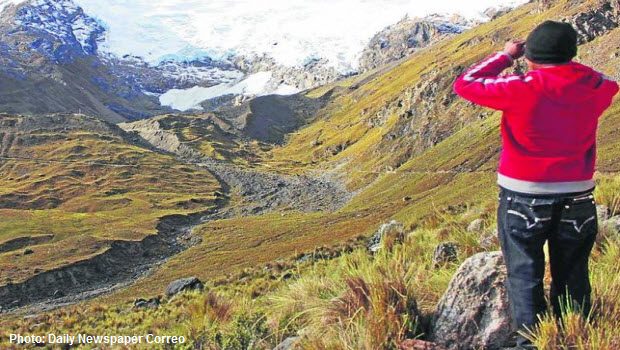 Huaytapallana recovery ~ a spot of good news on Peru’s melting glacier front
Huaytapallana recovery ~ a spot of good news on Peru’s melting glacier front  Peru wins World’s Best Culinary Destination prize at World Travel Awards
Peru wins World’s Best Culinary Destination prize at World Travel Awards 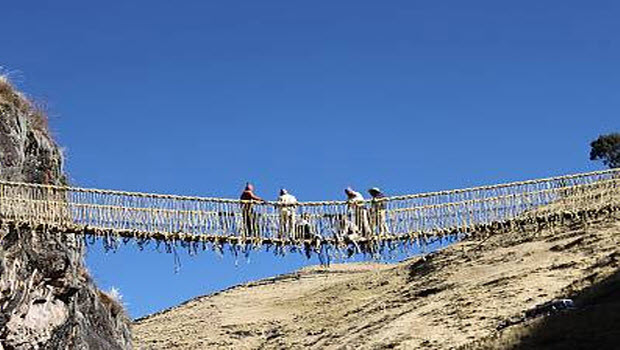 UNESCO eyes Q’eswachaka Inca rope bridge for heritage list
UNESCO eyes Q’eswachaka Inca rope bridge for heritage list 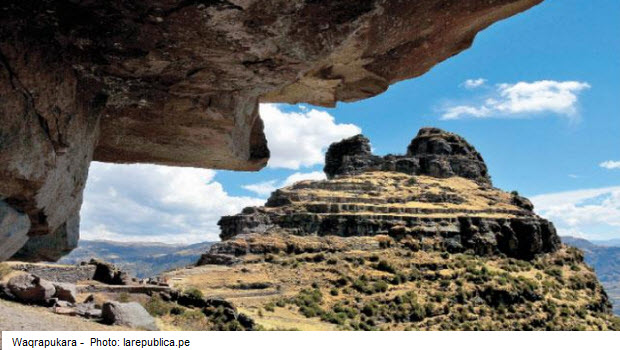 Treasure of Waqrapukara – a lesser known Inca sanctuary
Treasure of Waqrapukara – a lesser known Inca sanctuary 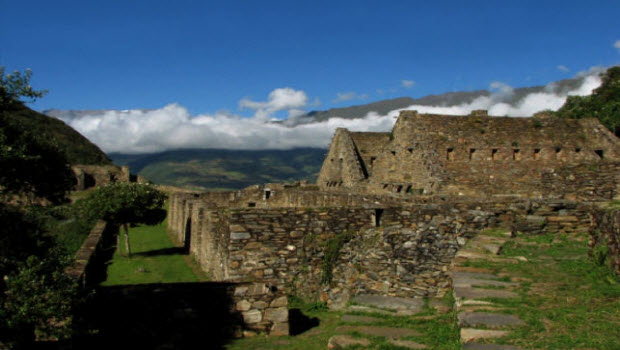 Extra! Extra! Crowds through the clouds to Choquequirao
Extra! Extra! Crowds through the clouds to Choquequirao 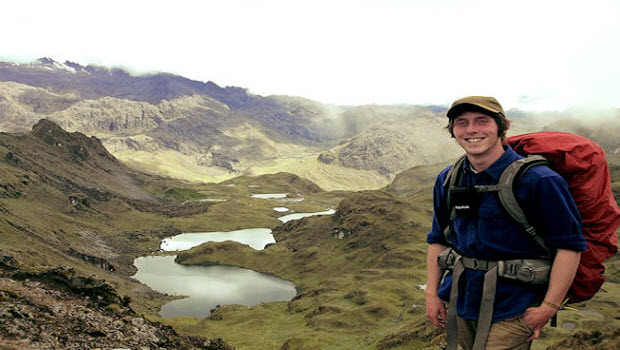 Machu Picchu is the climax after the Lares Valley Trek
Machu Picchu is the climax after the Lares Valley Trek 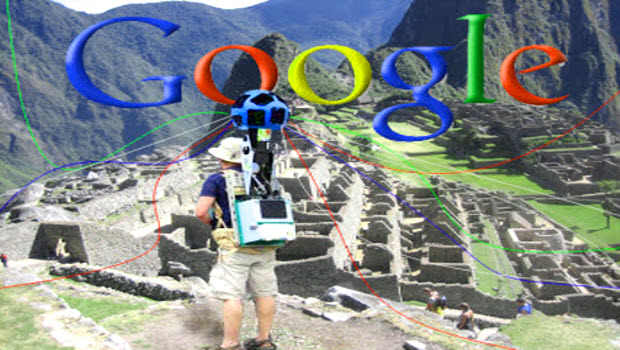 Google wants OK to scan Machu Picchu into Google Street View
Google wants OK to scan Machu Picchu into Google Street View 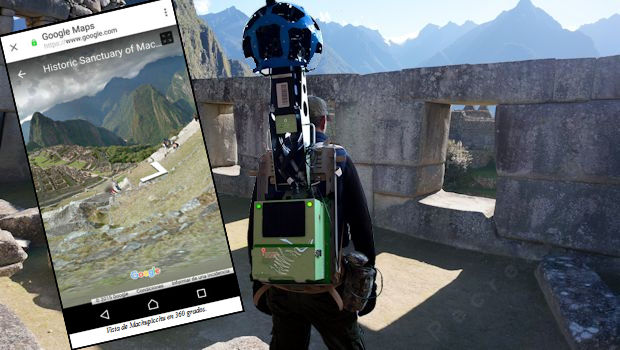 Google delivers on Street View of Machu Picchu
Google delivers on Street View of Machu Picchu